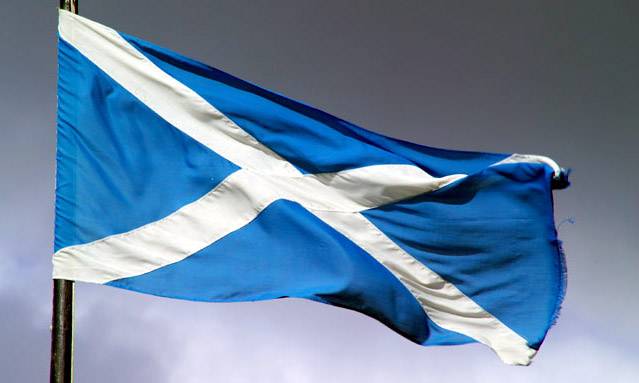Comment: Saint Andrew – a light across Europe and throughout centuries


Three days before the Saint Andrew (Andrei) celebration in Romania, guest writer Mariana Ganea goes back to history to tell the story of the saint which brought Christianity to Romania's current region, and explains the connection between the Scottish flag and Romania.
On an early morning, sometime in the first century, on the Black Sea beach, in the then Scytia Minor region (nowadays Romania's Dobrogea), a man preaches about Jesus Christ and his teaching. Brave, tough men from Dacia, strong people who believed in life beyond death and in the powerful link between body and soul listen to his words.
The preacher is Andrew, a man born in Bethsaida port in Palestine, and one of Jesus' 12 Apostles. The legend goes that he reached the Scytia Minor in his long peregrinations from Bethsaida to the current territory of Georgia and Ukraine, along the Black Sea and Russia. He traveled up to the region of nowadays' Kiev, where he built a cross on the site which now hosts Saint Andrew’s Church in the capital of Ukraine.
With his methodical, amazing work, dedicated to Jesus, he succeeded not only to convert to Christianity people from the territories he reached, but he founded the first bishopy of the Church in Byzantium, which turned him into the patron saint of the Ecumenical Patriarchate of Constantinople. In those days, preaching the words of Jesus was considered, especially in the powerful Roman Empire, a dangerous and criminal activity, so Andrew was searched, imprisoned and eventually killed by crucifixion, together with other many converts to the new religion, on a November morning in the first century AC, at Patras, in nowadays Greece. With his martyrdom, his history could have ended and he could have been, in spite of his work, a martyr as many others. But somehow, throughout centuries, his life's work has had a tremendous attraction force, going beyond the areas he traveled to.
Fast forward a bit and jump to the foggy, rainy, Scotland, where the Picts, the Celts and the dare-devisl and brave warriors named Scots had lived. Not too far from Edinburgh, in a place called Saint Andrew, the tough, yet this time puzzled highlanders watch a priest named Rule, who shows them a few relics of Saint Andrew brought from Constantinople. Beyond the legends, it's a fact that the people in that area have been fascinated by Andrew. The most touching story which is deeply buried in the Scots’ hearts is about Andrew’s role in the battle of Athelstaneford, East Lothian, in 832. The king Oengus II led an army formed by Picts and Scots and, the legend goes, they won the battle due to Saint Andrew’s support. What did the Saint do for Oeguns' army ? In the morning of the battle, white clouds shaped as Saint Andrew’s cross ( crux decussata) appeared on the sky, sending a divine message to the King and his army. This divine sign encouraged the solders and they gathered all their strength, their belief in God and love for their country and managed to defeat the enemy. So, the white saltire (Saint Andrew's Cross) set against a celestial blue background became the design of the Scottish flag (in picture), while Saint Andrew’s connections with Scotland were reinforced by the Declaration of Arbroath (1320). Saint Andrew’s day became the national day of Scotland too. In my many trips to in Scotland I was touched by the Scots’ love for their flag, which can be seen everywhere around the country, not only in Saint Andrew, Edinburgh or Glasgow.
The fascination for the story of this Christian Saint moved from Eastern to North Western Europe, and so have respect for him and celebrations. He is the patron saint of many countries, including Cyprus, Greece, Romania, Russia, Scotland, Ukraine, as well as the patron of fishermen, fishmongers, rope-makers and golfers.
On November 30, the Orthodox Church celebrates Saint Andrew. Romanians named Andrei and Andreea will be celebrating their name day, so make sure you say Happy nameday! (the same La multi ani! in Romanian) and keep an eye out for some pagan-rooted traditions. Some people believe the skies open on midnight on this holiday and the St. Andrew night is considered among the best for spells.
In a less mystical tradition, some Romanians plant wheat seeds on St. Andrew's day, place them in a bowl near their windows and keep them growing until New Year's Eve. If the plants will grow tall and thick, the person who planted it or the family will have a rich year, the traditional belief goes.
Let's also celebrate Saint Andrew with an open heart and with an open mind!
By Mariana Ganea, Guest Writer













